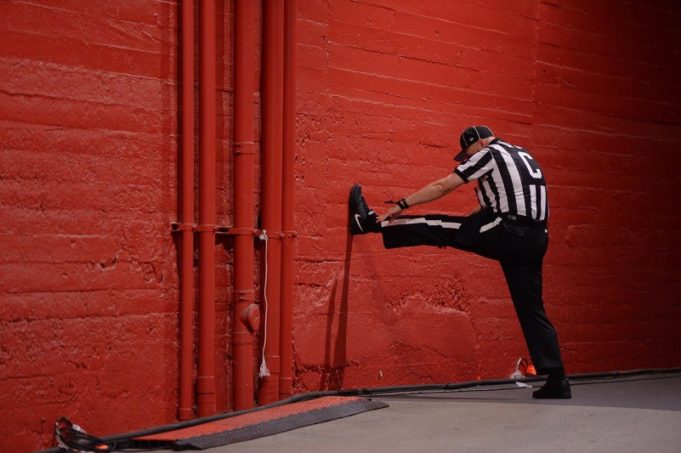According to the National Academy of Sports Medicine (NASM), flexibility plays a key role in developing optimum performance and recovery. Although it is often neglected, undervalued and under addressed, flexibility is one of the five pillars of physical fitness and should be thought of as an opportunity to increase performance levels.
Proper joint and muscle flexibility decreases risk of injury, prevents and corrects muscle imbalances, improves posture, enhances strength, joint range of motion and power output allowing the body to perform without error.
There are many different types of stretching and flexibility training protocols, all of which can be used to enhance athletic performance. For the purposes of this article, two types of stretching — static and dynamic — will be addressed as they apply to recovery, regeneration and movement preparation.
Static stretching is stretching a muscle to a point of tension and holding that stretch for a given period of time, usually 20-30 seconds. That type of stretching allows concurrent relaxation and elongation of the muscle fibers. Although that is the most familiar type of stretching, it is not always the best choice where performance is concerned. Recent research has shown static stretching performed before activity actually reduces muscular strength and performance levels.
According to NASM, static stretching is best utilized after activity to return muscles to normal resting lengths and should be performed on the major muscles used during the activity. Static stretching prior to activity should be done before the dynamic warm up and only with those areas that are tight or overactive. It is important to note that it is acceptable to use only static stretching before activity as long as it is performed two or more hours before the activity. Static stretches can be used immediately after games, after long periods of sitting during the day, and/or in the evening on non-competition days.
The use of proper technique is more important than how far one goes into the stretch. With static stretching, choose one stretch for each major muscle group, perform five-10 repetitions, hold each stretch at end range for two seconds, return to start position, repeat and hold the final stretch for 20-30 seconds. Muscles should relax a little more with each stretch. Use more repetitions for those muscles which are most tight and have the least range of motion.
Dynamic stretching is stretching through movement. It requires the muscles’ own force production and the body’s momentum to take a joint through its full range of motion. That type of stretching is beneficial as movement preparation (pregame) or to enhance mobility and recovery on non-competition days.
Warm muscles create more energy and force production, which leads to a greater performance level. NASM says dynamic stretching should be used predominately before a workout or sport activity to activate and balance muscles, increase core and muscle temperature, elongate muscles, stimulate the nervous system and decrease injury risk.
For the referee to perform at maximal effort from the beginning of the game, a dynamic warm up and stretching routine is imperative and should always be performed. To create a dynamic warm up, choose six-10 functional bodyweight movements, do one set of five-10 repetitions for each, and be sure to target all of the working joints and muscle groups. Finish with sport specific movements, which are those movements that will be performed during the sport such as run, lateral slide, backpedal, sprint, etc. Spend 10-15 minutes addressing all the major joints to ensure maximum benefits and increase performance levels.
Due to the performance level required by officials, flexibility can assist in extending careers. Age, repetitive movement, poor technical skill, lack of post activity recovery and regeneration and lack of core stabilization are the major factors that affect flexibility negatively. Officials can work to enhance joint and muscle flexibility by performing some aspect of a flexibility training routine daily.
As a key component in optimizing performance, flexibility training is extremely valuable and the benefits of such are exponential, even beyond an official’s career.
What's Your Call? Leave a Comment:
Note: This article is archival in nature. Rules, interpretations, mechanics, philosophies and other information may or may not be correct for the current year.
This article is the copyright of ©Referee Enterprises, Inc., and may not be republished in whole or in part online, in print or in any capacity without expressed written permission from Referee. The article is made available for educational use by individuals.

















